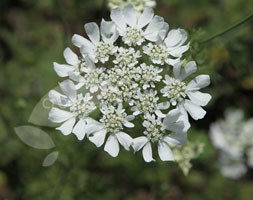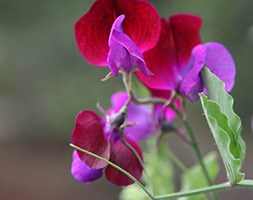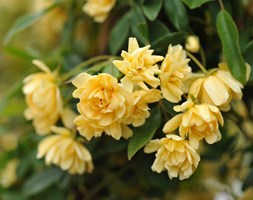Price reductions at Crocus
by Sarah - February 26th, 2015.Filed under: Crocus, Price Reductions.
Crocus reduced the price on these products today
Orlaya grandiflora (Orlaya grandiflora) was £8.99 now £4.99
Position: full sun Soil: fertile, well-drained soil Rate of growth: average Flowering period: June to October Flower colour: pure white Other features:long lasting cut flower Hardiness: hardy annual Lovely, pure white flowers form in big, flat-topped clusters, which resemble lace-cap hydrangeas. They appear throughout the summer above the fine, fern-like foliage. This gorgeous hardy annual has an extremely long flowering period and will often flower until the first frosts. It is often seen in dry, grassy fields and olive groves throughout the Mediterranean so it is particularly good in wild gardens. Garden care: Feed with a liquid fertiliser every two weeks when it is actively growing. Once the plant has finished flowering you can collect the seed and sow immediately to propagate more plants for the following year.
Lathyrus odoratus ‘Matucana’ (sweet pea Matucana) was £7.99 now £6.99
These sweet peas are autumn sown and grown in root trainers to promote longer deep roots. They have been grown under a cold polythene tunnel and we will despatch them as soon as they are ready to be planted outside. (See the dates above for the estimated despatch date) Position: full sun Soil: fertile, humus-rich, well-drained soil Rate of growth: average to fast-growing Flowering period: June to September Flower colour: deep purple and red Other features: very highly scented flowers Hardiness: hardy annual Masses of highly fragrant, bi-coloured blooms appear from July to September adding colour and sweet perfume to the garden. This old-fashioned variety is renowned for its deliciously scented and very beautiful flowers. It was first introduced to Britain in 1700, and it’s perfect for training over a wigwam of bamboo canes in a sunny, well-drained site. In our (not very scientific) sweet pea trial on the nursery, we found that this variety had loads of very beautiful lilac and mauve flowers in August, but these appeared on short (around 6″) stems, so it was not the best for cutting. They did have a very nice scent though. All the sweet-peas in our trial however, produced significantly better plants when the seeds were sown in autumn rather than spring. Garden care: Incorporate lots of well-rotted organic matter in the planting hole. To make sure you keep the plants in top condition spray regularly with a fungicide as all sweet peas are prone to mildew, and feed with a high potash fertiliser such as Tomorite to encourage plenty of flowers. Don’t forget to keep cutting the flowers so that you get plenty more!
Rosa banksiae ‘Lutea’ (rose (rambler)) was £29.99 now £14.99
Position: full sun Soil: fertile, humus-rich, moist, well-drained soil Rate of growth: average to fast-growing Flowering period: April to June Flower colour: yellow Other features: scented flowers Hardiness: frost hardy (needs winter protection) This lovely rambling rose produces graceful sprays of small, double, deep yellow flowers in April and May. Perfect for covering an arch or pergola or for growing through a strong tree, where the lightly scented flowers can best be appreciated. It is happiest in a sunny sheltered site. Garden care: If planting in winter, choose a frost-free spell when the soil is not frozen. Roses are quite deep-rooted plants so dig a deep hole roughly twice as wide as the plants roots and mix in a generous amount of composted organic matter. A top-dressing of a general purpose fertiliser can be worked into the surrounding soil and we also recommend using Rose Rootgrow at this stage to encourage better root development. This is particularly important when planting into a bed where roses have previously been grown as Rose Rootgrow is said to combat rose sickness (aka. replant disease). Before planting you will also need to make sure that there is adequate support for the rose to grow onto. Remove the plants from their pots and gently spread out the roots before placing them in the centre of the hole. Try to ensure that the ‘bud union’ (the point where the cultivated rose has been grafted onto the rootstock, and from where the shoots emerge) is at soil level. You can judge this quite easily by laying something flat, like a spade handle or bamboo cane, across the top of the hole. When they are at the right height, back-fill the hole, firming the soil down gently before watering the plant well. Tie the stems to the support in and open fan shape and as new shoots emerge, tie these in horizontally. When planting against a large tree, dig a hole about a metre away from the trunk and angle the rose towards the trunk. The tree must be mature and strong enough to take the weight of the rose. Or you can train the rose up to the crown of branches, using wooden supports. In this case the rose should be planted on the outer reaches of the tree’s canopy. Allow it to scramble up the supports and then into your chosen tree. Water generously until well established, and apply a specialist rose fertiliser (following the manufacturers instructions) each spring. They will also benefit fr









